Turning Your Garage Into Real Space For The Home
Transform the outside of your into a serene and stylish outdoor living space that reflects your personal style.

Mid century modern design is known for combining sleek lines with organic shapes, using new materials, and methods to reimagine traditional pieces. Rooted in the Industrial Revolution and Post-War Era, the emergence of mid-century modern design began in the middle of the 20th century in America, taking shape in the 1930s and lasting well through to the 1960s.
The aesthetics of mid century modern brought the geometric forms and clean lines of the Bauhaus teachings into the Modernist movement, pioneered by iconic designers including Le Corbusier, Ludwig Mies Van Der Rohe, Charles and Ray Eames, Charlotte Perriand, and Arne Jacobsen – to name a few – were at the helm of the modernist movement.
A mid century modern house would generally be one-story with an open-plan layout embellished with sleek, practical furniture, a lowered roof or ceiling, big windows on the sides and back of the house, and an emphasis on the outdoor space. Since its origins, mid century modern design stretches beyond home decor and plays a huge role throughout our culture. In the landscape of mid century modern, it was often considered to be found in architecture first then followed by decor and design trends.
Mid century modern decor is synonymous with elegant chairs, statement lamps, and TV stands; featuring tapered legs, bold pops of colour, materials such as sleek chrome, and geometric patterns. Mid century modern furniture was designed to be multifunctional, based on the design principle that furniture was to conserve space in small homes and apartments rather than overwhelm it. You’ll generally find that original pieces can be stacked, folded, or nested.

Mid century modern designs have stood the test of time and continue to be as stylish, if not more so, in our homes, institutions, and offices today. The essence of mid century modern and the reason for its popularity – still to this day – is rooted in the simplicity and functionality of the iconic pieces. The use of mix-and-match materials makes them a perfect addition to any home. It could also be said that those buying homes and furniture today would have grown up around mid century design, meaning that their association with the style brings back a dose of nostalgia.
Now, why wouldn’t you want a piece of that in your home?
A question commonly asked is if there is a difference between mid-century modern and modern. They’re two of the same and are used together to define 1) an era 2) a style. Mid century refers to the era of the 1930s – 1960s, whereas Modern is used to describe the present day and the future. Mid century modern defined the longevity of the style through the materials and technology that were used to continue the manufacturing of iconic pieces, through brands including Herman Miller and Florence Knoll.
Today, Herman Miller owns the rights to produce much of Charles and Ray Eames’, and George Nelson’s furniture in North America and Europe, and Knoll own the rights to manufacture iconic collection from designers including Mies van der Rohe and Marcel Breuer.
In the words of Sotheby’s Joshua Holdeman, mid century modern furniture and decor are “simply well-designed objects, with a timeless look.” Defined by organic shapes, minimal decor, and a love for materials, mid century modern can be relatively simple to emulate at home.
One of the key principles that define the mid century modern design is the idea that ‘form follows function’. That’s to say that furniture, objects, and buildings influenced by the modernism movement are designed to reflect their intended purpose; that’s to say if they prove not to be practical, then they’re not needed.
It’s impossible to have missed the classic Eames Lounge Chair and Ottoman that Charles and Ray Eames originally introduced to the world of interiors in 1956. The power couple’s creativity has no bounds when it came to designing furniture that made a statement, and never felt they had to compromise on comfort. The piece will elevate a living room or a reading nook that few pieces can achieve. It straddles all the expectations of what you’d want from a lounge chair beautifully. ![]()
On the other hand, if you’re looking for a mid century modern piece that sets a slightly more contemporary tone for your living room, the Relax 3-Seater Sofa is a timeless example of how to work in mid century modern classic that can too complement modern decor perfectly. Accompany with the Noguchi coffee table, famously acclaimed to be a ‘sculpture for use’, making the perfect centrepiece for any living area.
For finishing touches, the Dot Pattern Wool blanket by Charles & Ray Eames is an indispensable mid century decorative item that’s made to snuggle up into and have rested underneath Greta Grossman’s Gräshoppa Floor Lamp; making the most perfect reading nook.
Planning the kitchen always comes with a little extra thought; layout, seats, tableware, kitchenware, splashback, and much more. A kitchen designed mid century modern, however, makes planning a whole lot easier. Consider the Tulip Table, a table designed to address the ‘ugly, confusing, and unrestful world’ that Eero Saarinen observed underneath chairs and tables. The elegant shape of the table is hard to come by and makes a stunning addition to any kitchen. Place the classic DSW Dining Chairs, by the Eames duo under the table, Nelson’s Bubble collection up above, and you’ve created the ideal mid century breakfast spot.
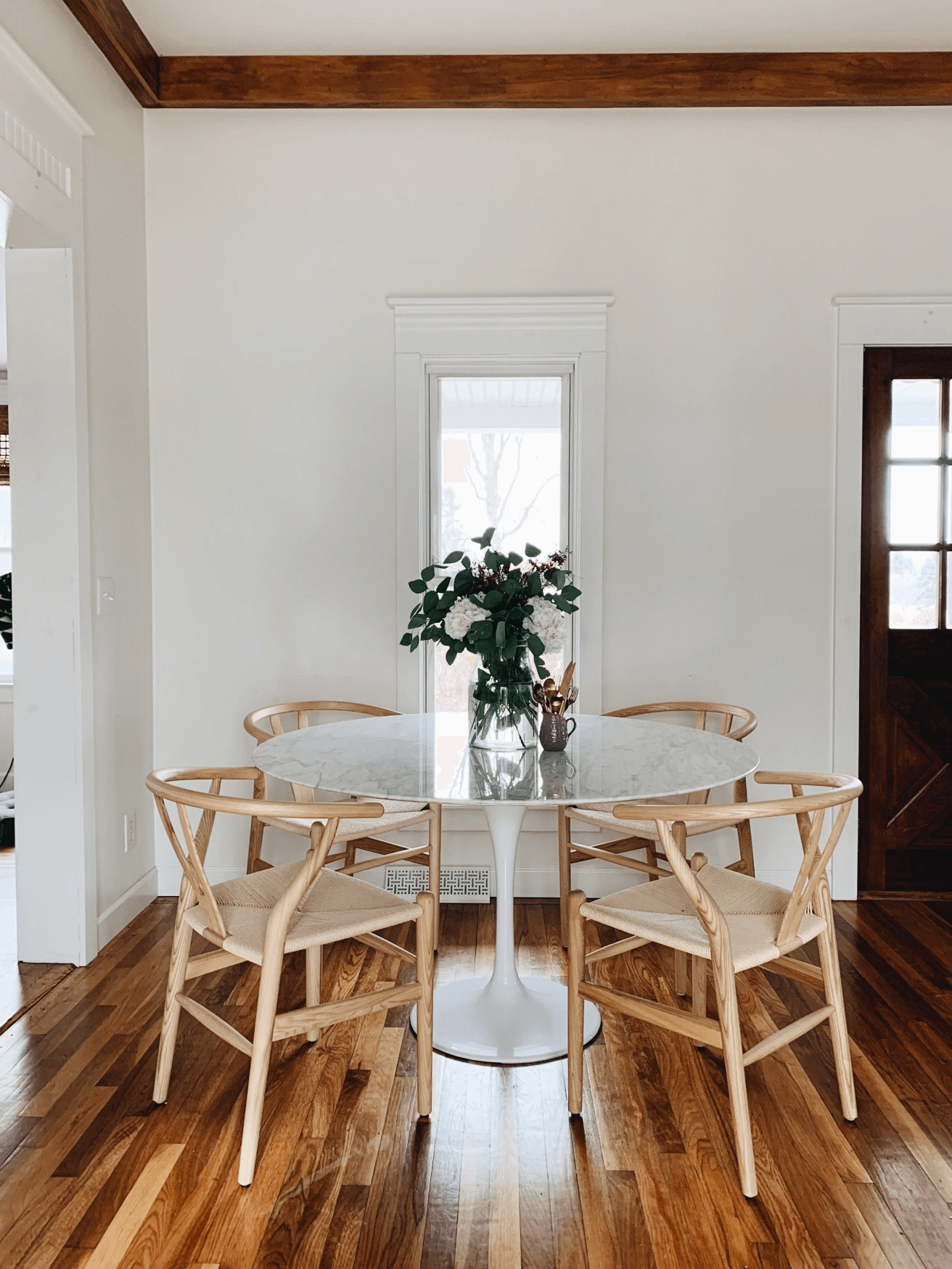
If your kitchen has a long breakfast bar and you’re looking for stools to fill, the beautifully moulded plywood stools designed by Norman Cherner are iconic pieces of mid century design. So much so, that they were showcased in exhibitions worldwide including the Vitra Design Museum in Germany. Top off the look with one of the first sustainable products ever to be made; Alvar Aalto’s 900 Tea Trolley, a beautiful creation to store tableware or your favourite tea set.
When it comes to adding mid century modern to your bedroom, you can bring in as much of the interior style as you like. The mid century designers thought of everything when it came to creating stylish furniture that catered to the need for practicality, and undeniable style. The Nelson Thin Edge Bed is one of the most classic pieces of George Nelson, and sadly not the easier to get your hands on. That said, if you don’t mind the wait it’s possible to have it shipped from the States to achieve the elegant and timeless look of mid century modern.
Pair with Greta Grossman’s stunning vintage-inspired dresser to add warmth to the room with one of Gio Ponti’s most prominent designs, the Randaccio Mirror.
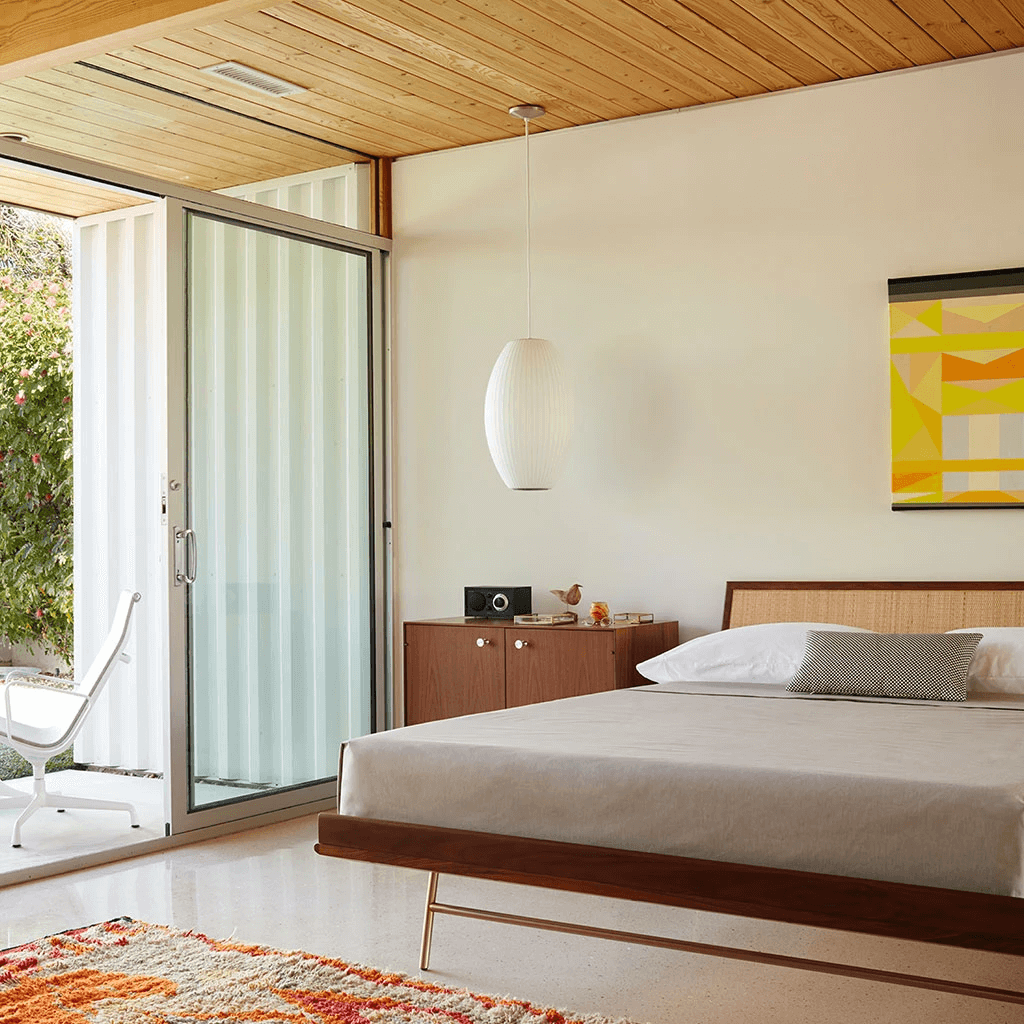
Kitting out your home office can either make or break your flow when it comes to productivity. Mid century modern designers were the first to put a spotlight on just how important our decor and furniture is to have a good day’s work. What’s needed? Only a small collection of pieces to not only make your home office sing from an aesthetic perspective, and to have it be a comfortable space for you to start your day in.
Set the room with the iconic Aluminium Chair, designed by Charles and Ray Eames in 1958. Their inspiration? The design duo wanted to make a point to abandon the seat shell that you’d typically find in the office and so created the Aluminium Chair to adapt to the body of the sitter; making it unbelievably comfortable. Accompany the standout chair with Finn Juhl’s Nyhavn Desk & Tray Unit, representing the designer’s philosophy that “gaps are also space”, and create a stunning, sophisticated working spot in your home.
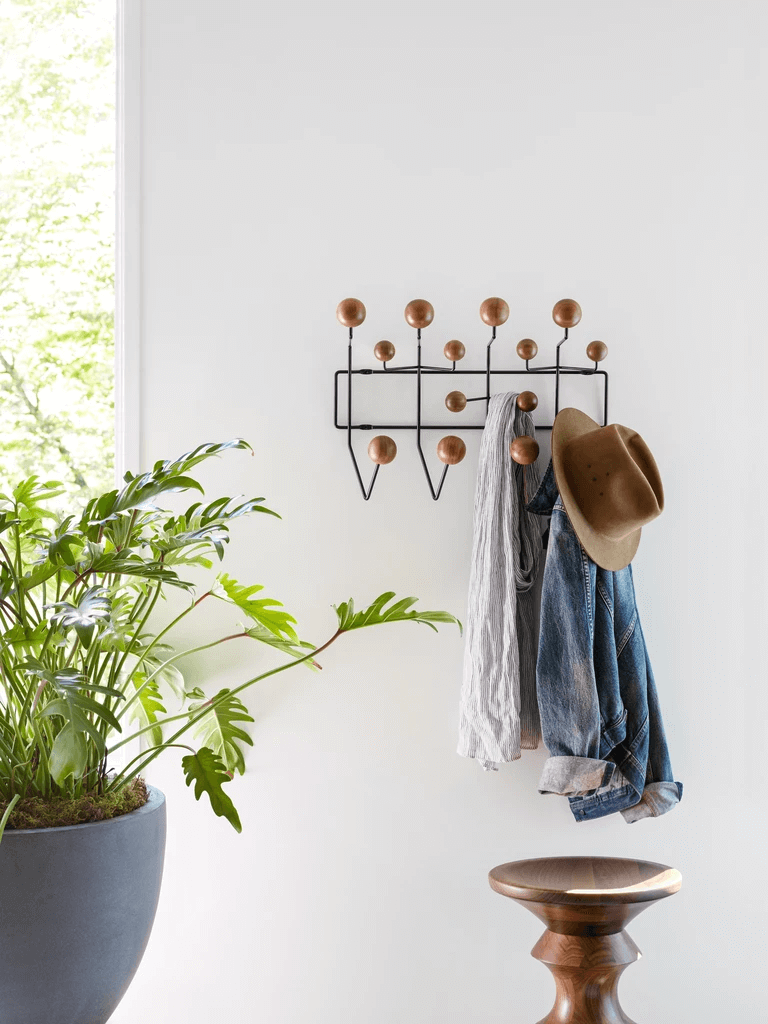
Now finally the decor, keep it simple but nonetheless stylish; add the Eames’ Hang-It-All rack and George Nelson’s Polygon clock as the finishing touches to bring a sense of play and interesting shapes into the space. Interestingly, although not surprisingly, the Polygon Clock was designed during a spontaneous gathering amongst Nelson, Isamu Noguchi, and Bucky Fuller; ‘And there was one night when the ball clock got developed… Noguchi came by, and Bucky Fuller came by… we started making doodles.’
If you wanted to go the extra mile, bring in the Barcelona Day Bed as a nod to the iconic designer, Miles van der Rohe. An iconic piece that will give you all the excuses to carve out time for mid-day naps. You’re welcome.
It goes without saying that mid-century modern is renowned for its incredible history. It laid the foundation for experimental materials that have become ever more prevalent in today’s world. Its history defines so much more than just an era; it gives us a glimpse into the creative minds behind what we currently see today in our homes: consider the design inspiration of IKEA furniture. We’ve listed some of our favourite books to learn more for the curious among you, and share even more over on our mid cenutry modern design books feature.
Start growing your mid-century modern collection and indulge in the classics:
Grab a vintage steal and get your hands on antique mid-century modern furniture and objects:
Be inspired by the mid-century modern style and make it your own:
Photo credits: 1-2. Oh, I Design
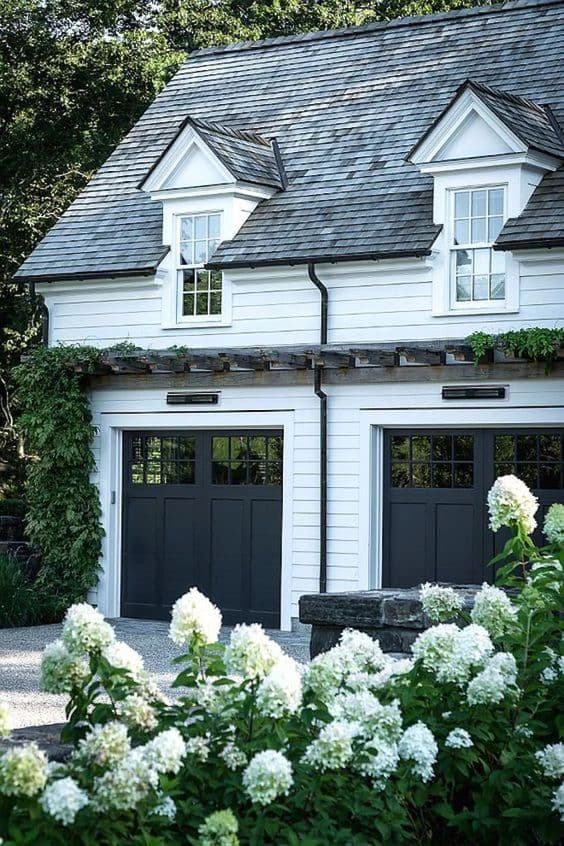
Transform the outside of your into a serene and stylish outdoor living space that reflects your personal style.
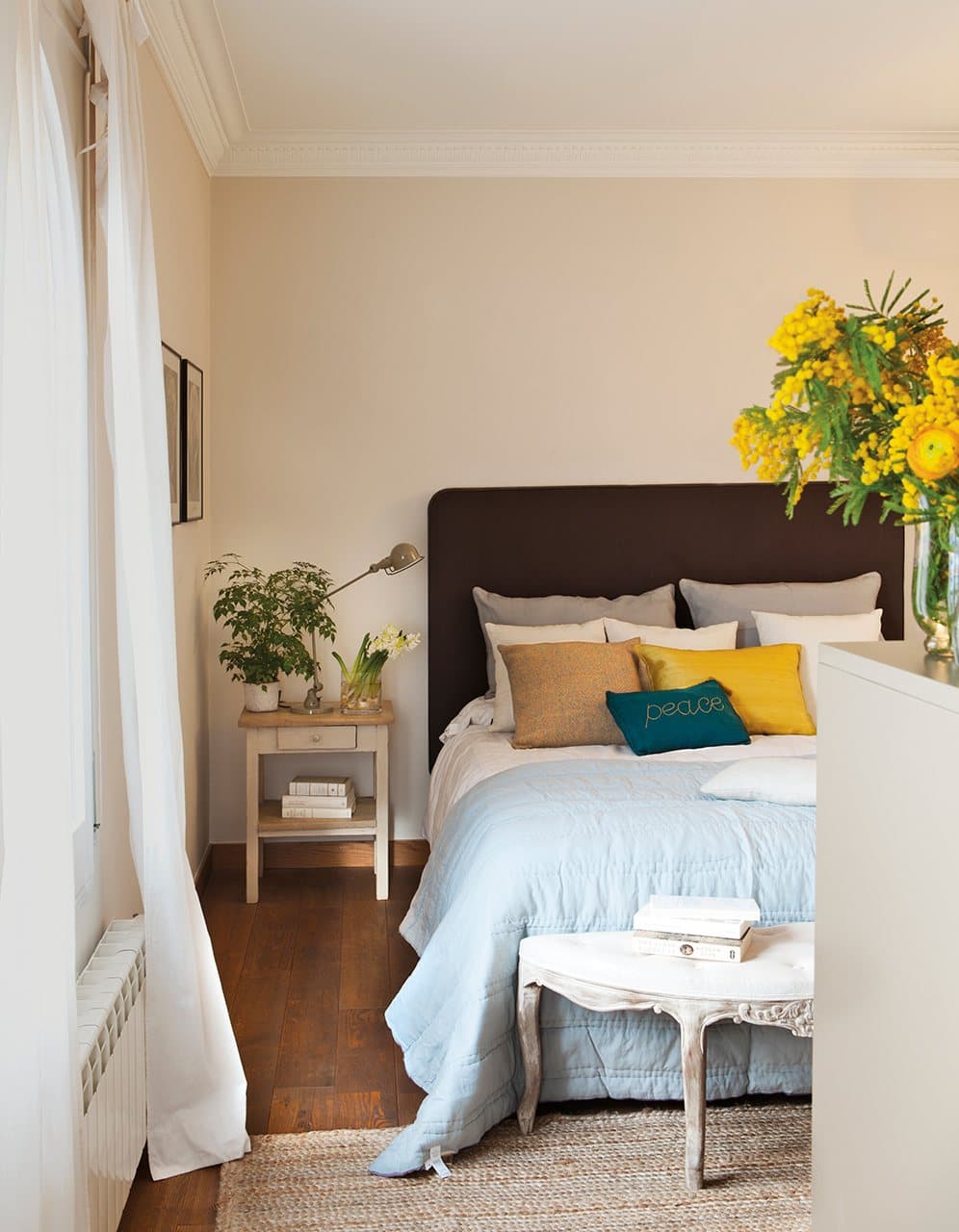
With an emphasis on materials and fabrics, furniture and decor the shabby chic colour palette is one that keeps the focus on the details and relishes in elegance and charm.

If the idea of bringing two styles together is daunting, this home may be the inspiration you're looking for.